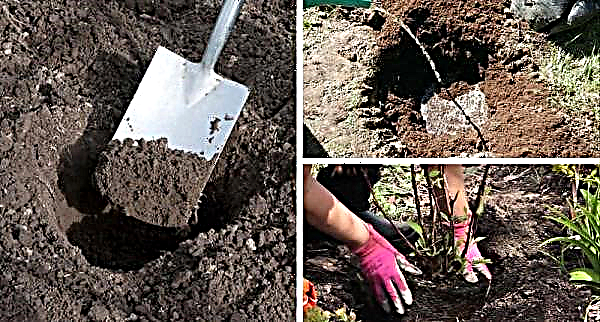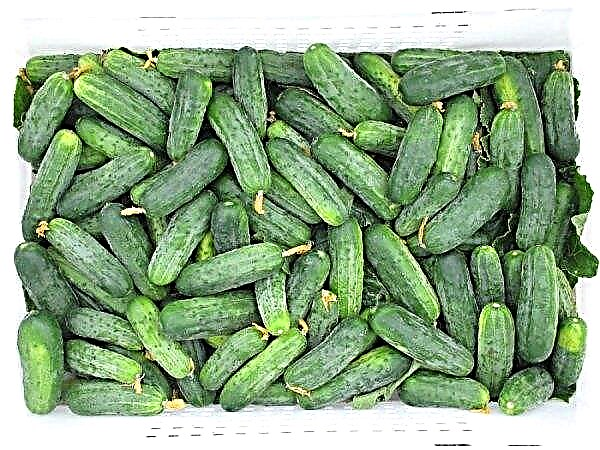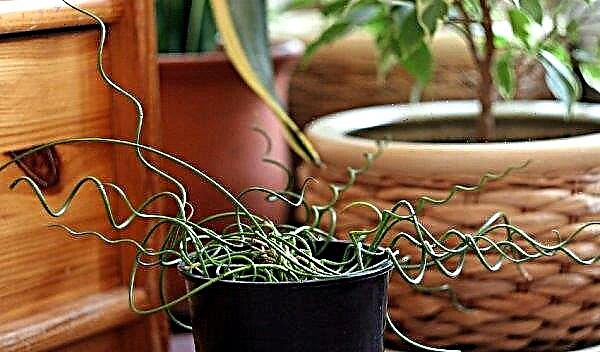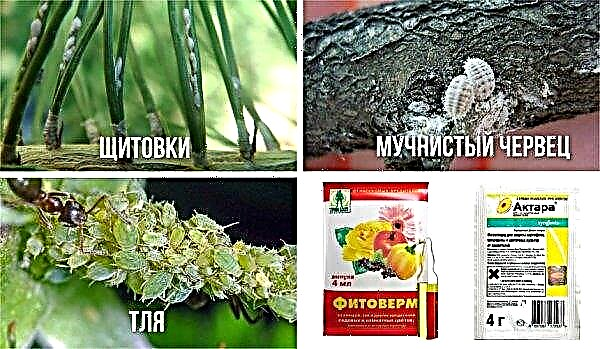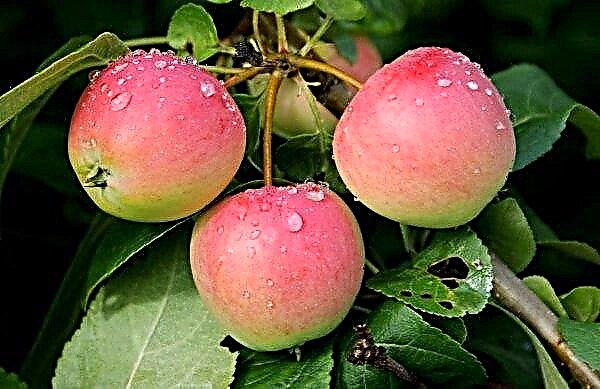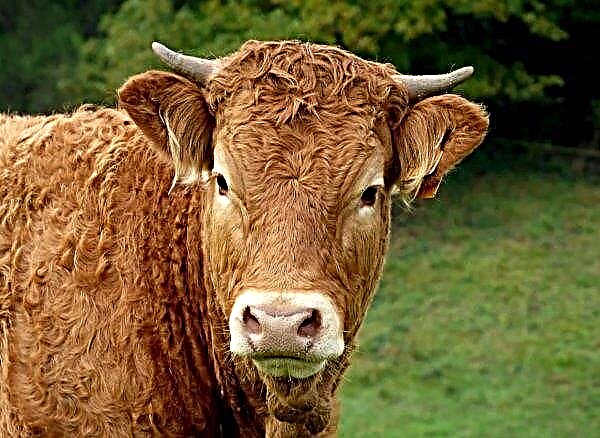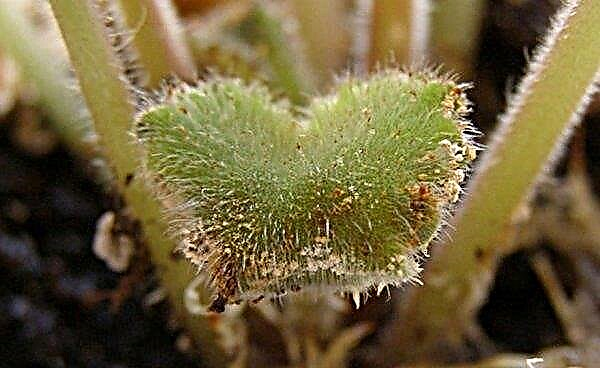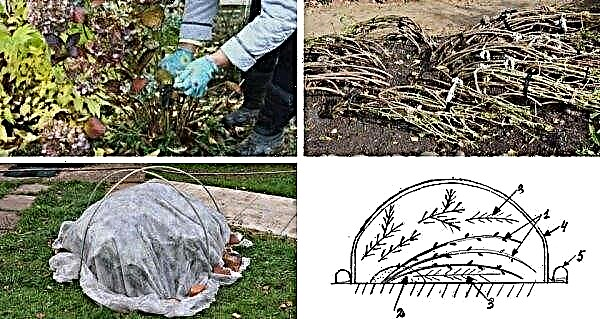Many gardeners are wary of hydrangeas, as they are afraid to make a mistake in the growing process and provoke the death of the plant. Phantom variety is an unusual variety that can give your garden not only a bright accent, but also fill the surrounding space with a honey aroma. This article will discuss the main aspects of growing the aforementioned flower culture.
Grade description
According to the description of the panicled hydrangea variety Phantom, it belongs to the overall crops. The height of the plant is at least 2.5 m, but more massive shrubs can also be found. The crown diameter is about 2 m.
Young shoots are characterized by a rich green hue. In the process of their maturation, the color changes to brown-red. Foliage is large, dark green. Streaks are barely visible on the surface.

Panicled hydrangea flowers Phantom have the following characteristics:
- the shade of the petals is light green or light pink;
- flower width - 1 cm;
- diameter of inflorescences - up to 30 cm;
- the form is wide-pyramidal.
The culture begins to bloom 4 years after planting. The first flowers appear in late June or early July. Flowering continues until the onset of the first frost. Panicled hydrangea of the Phantom variety has high winter hardiness characteristics. The culture is able to withstand a decrease in temperature indicators, without additional shelter, to -23 ° C.
Important! The temporary cultivation period, subject to quality care, does not exceed 40 years.
Hydrangea planting
In order for Phantom hydrangea to develop harmoniously, it is necessary to carry out a proper planting. To do this, determine the choice of a place for planting and timing. It is also necessary to critically approach the choice of planting material, and to prepare the soil for planting in advance. The quality and completeness of flowering culture depends on this.
Video: Planting Hydrangea Phantom
When to plant
In the middle zone of the country, planting is carried out in the spring. Thanks to this, the plant will have time to acclimatize. Also, the bushes will have time to form a developed root system, which will provide reliable protection against a sharp cooling in late autumn - early winter.
If you live in the southern regions, then it is recommended to plant plants at the end of September. Favorable climatic conditions will allow the rhizome of the bush to form before the onset of the first frost.
Site and soil preparation
Panicled hydrangea of the Phantom variety belongs to photophilous cultures. However, planting is recommended to be carried out in such a place so that direct sunlight falls on the plants only before lunch.

In the afternoon, the shrub should be in partial shade. If this condition is not followed, then burns will appear on the hydrangea crown, which will lead to the drying of the green mass of the plant.
Important! Landing should be carried out next to barriers or buildings. Buildings will be used as protection against strong gusts of wind.
Phantom variety grows on all types of soil. The main thing is that the soil is fertile. Hydrangea blooms best on loams with neutral or high acidity. If you plant a culture in non-alkaline lands, then the inflorescences become small, the bushes weaken and begin to hurt.
First, they plant the place for planting and make humus (20 kg per 1 m²). After that, the acidity of the soil is monitored. If it exceeds 8.0 pH, then it is necessary to reduce to 7 by adding dolomite flour (500 g per 1 m²).
Video: Hydrangea Phantom
Selection and preparation of planting material
It is better to buy seedlings in specialized stores or nurseries. In such outlets, planting material is properly processed and stored, so that all varietal characteristics are preserved.
When choosing seedlings, pay attention to the following characteristics:
- the optimal age of the seedling is 2-3 years;
- height - from 60 to 70 cm;
- lack of signs of disease (spots, cracks, plaque);
- developed root system (length from 5 cm).
Did you know? During archaeological excavations in North America, scientists determined that hydrangea grew more than 40 thousand years ago.
Preparing planting material lies in the fact that 5 days before planting, the seedling is placed in a solution of “Kornevin” (30 g per 5 l of water) or “Epina” (50 g per 5 l of water). This will accelerate the development of the plant, which will positively affect its acclimatization in the open ground.
Landing technology
The landing procedure is as follows:
- Dig holes about 80 × 40 × 40 cm in size, at a distance of 2 m from each other.
- 2 weeks before planting, pour an 8-centimeter layer of drainage onto the bottom. Cover it with a mixture of peat and humus (3 kg each) and add 100 g of superphosphate.
- After the specified time, form a small hill at the bottom of the hole on which the seedling is set.
- Spread the root system over the surface of the embankment and sprinkle with soil.
- As the hole is filled with soil, water the roots so that the soil settles better.
- Fill the hole completely, then pour 10 liters of water.

Hydrangea Care
During the cultivation of hydrangeas of the Phantom variety, special attention must be paid to care. It is very important to ensure high-quality watering and to regularly fertilize. Also, you need to loosen the top layer of soil, remove weeds, trim the crown and cover the bushes for the winter. It is equally important to spray plants against diseases and pests, so as not to provoke the death of flowers.
Watering
It is necessary to water Phantom hydrangea bushes carefully so as not to damage the root system. This is due to the fact that it is superficial, therefore, immediately responds to adverse conditions.
Watering interval (for young shrubs) is 3 days. At least 15 liters of water are poured under each plant. Adult hydrangeas are watered once a week and use 20 l of water. You need to irrigate the soil in the evening or early in the morning. If the sun will fall on the bush when there are drops of water on the crown, then burns may occur.

Top dressing
Fertilizing should be done often, because in view of the abundant flowering, bushes need a large amount of nutrients.
Top dressing is used several times during the season:
- before blooming, potassium nitrate is used (40 g per bush);
- during flowering, ammonium nitrate is introduced (10 g per 1 plant);
- superphosphate (50 g per 1 copy) is used a week before the cold snap.
Did you know? Every year, January 5, celebrate "Hydrangea Day."
Between these dressings, you can make additional fertilizer. At intervals of 2 weeks, use the infusion of overripe manure (1 kg per 10 liters of water). Under each bush, pour 3 liters of solution.

Mulching and loosening of soil
Before each watering and top dressing, you need to loosen the soil to a depth of 5 cm. Due to this, nutrients and moisture will penetrate the root system, which significantly activates the development of the bush. Also, do not forget to remove weeds on the surface of which bacteria and viruses develop that provoke the appearance of diseases and pests.
Mulching the soil is carried out immediately after planting. To do this, loosen the near-stem part of the soil, water it and cover it with a 20-cm layer of spruce, humus or fallen leaves. Due to this, an optimal moisture balance is maintained inside the soil, preventing dehydration of the root system and the entire plant.

Pruning
Panicled hydrangea of the Phantom variety needs forming clippings. If they are not carried out, then excessive shoot growth will lead to excessive crown density. This threatens that the inflorescences will be smaller or completely disappear. Forming pruning "for 4 kidneys" is carried out in the fall. First remove weak, warped shoots. After this, you need to cut the branches directed into the bush. This will prevent shading of the crown. Do not discard the crop - they can be used to propagate the crop.
In the spring, diseased, dry or frozen shoots are removed. Such sanitary cleaning can increase the life expectancy of hydrangeas.

Winter preparations
Preparation of panicled hydrangea of the Phantom variety for winter is as follows:
- From September, stop watering the bushes.
- Feed each bush 5 l of superphosphate solution (100 g per 5 l of water) so that the shoots have time to ripen before the onset of frost.
- Tie the branches of the plant, forming a kind of bouquet, using a tight rope.
- Cover the crown with plastic wrap if cooling to -30 ° C is expected.
If the mulch layer has slipped, then you need to restore it. To do this, supplement the level of the material that was used after planting.
Hydrangea Phantom in landscape design
Panicled hydrangea variety Phantom is very in demand in landscape design. Shrubs are planted in private gardens, public parks or in public gardens.
With the help of this culture, it is possible to create numerous plant forms:
- Hedgerows or framing borders.
- Tapeworm planting in the flower beds next to the standard trees.
- Group compositions in several tiers.

So, now you know with what methods you can grow panicled hydrangea of the Phantom variety. This unpretentious plant is very popular among both experienced gardeners and beginners. If you take good care of the bushes, you can create a beautiful background in the garden and every day admire the bright inflorescences and breathe in a delicate aroma.

